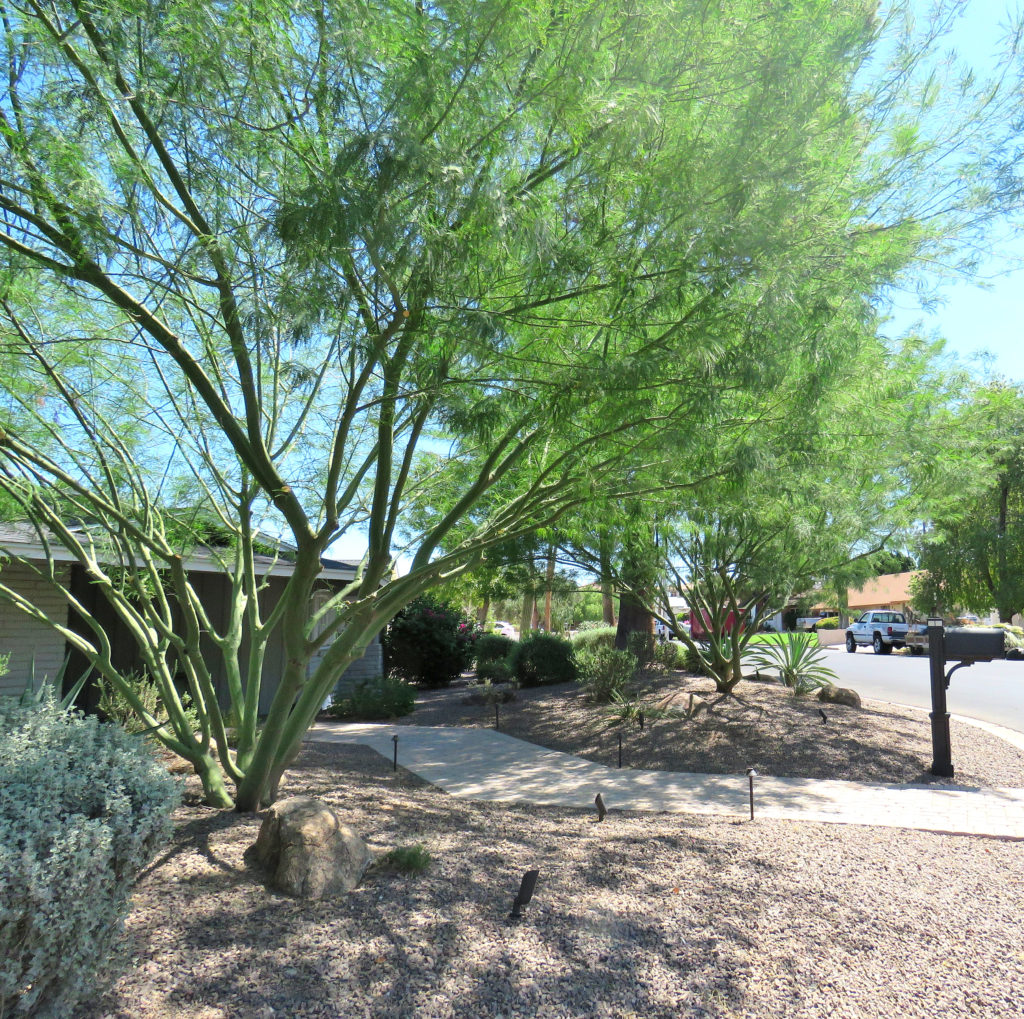Trees Are Superheroes
Why do we celebrate Arbor Day, a day set aside just for trees? These superheroes of nature cool our environment, they help clean our air by absorbing carbon dioxide while also producing oxygen, and they provide habitat for wildlife. They help us save air conditioning costs in summer when properly placed around buildings to provide summer shade, but will also reduce heating costs when placed strategically around properties as a windbreak. During rain events trees also intercept and filter our water, and help to slow storm water surges and flooding. As if that wasn’t enough, let us share one more fun fact… trees have been proven to reduce stress, and improve overall health of us humans – have you heard of forest bathing?
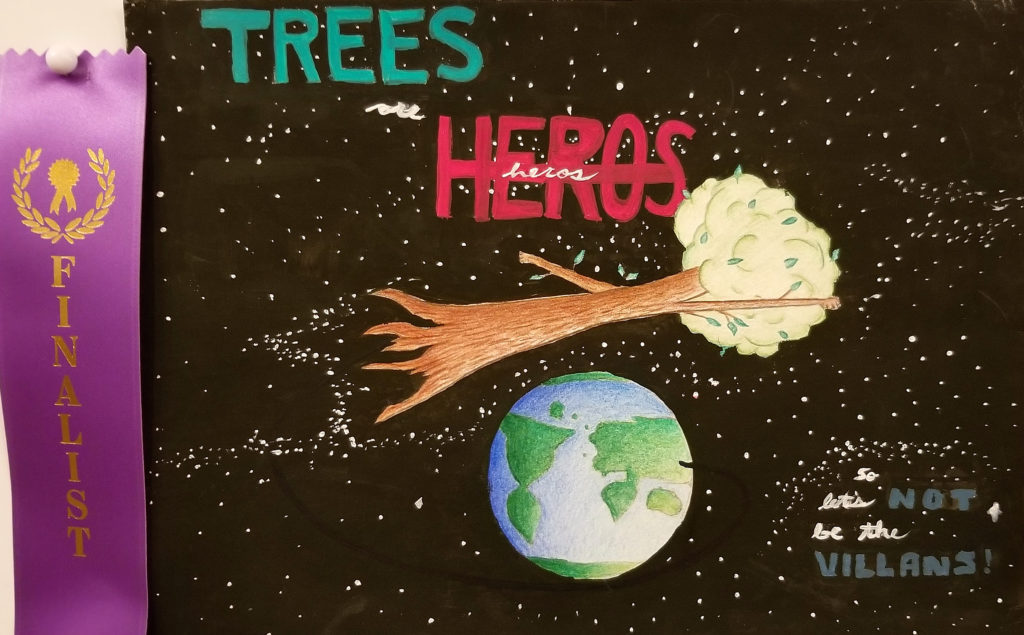
We Need to Plant Shade in the Desert
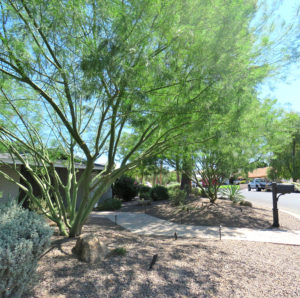
And, if you’re a desert dweller, you know it’s always cooler under the shade of a tree. That’s thanks to the branches and leaves blocking the direct sunlight from heating up the surface at ground level. But trees also act as natural evaporative coolers. Trees take up water that gets used for photosynthesis – you remember, right? Water plus carbon dioxide plus sunlight and BAM, the leaves make energy for the plant and exhale oxygen and water vapor which evaporates and cools the surrounding air.
But Trees Need Water, Right?
Yes, trees need water to grow and survive and to stay healthy enough to provide the many benefits mentioned above. Different tree species will have vastly different water requirements. Citrus and other fruit trees will need more water than a shade tree, and some shade trees need a lot more water than others. You know if you’re reading a blog on Water – Use It Wisely that we’re going to encourage you to select shade trees that are native to our American deserts or other deserts around the world. These trees will have minimal water requirements, especially after they are established. Many will do very well on natural rainfall, minimizing the extra water you would need to provide. Find a great selection of lush and colorful low-water using trees on this AMWUA site. To learn how to properly water trees and give them just the right amount of water needed, check out our Landscape Watering by the Numbers interactive online guide.
How Trees Contribute to the Water Cycle
Plants — especially trees — play a critical role in regulating the water cycle. This is the process by which water circulates between the earth’s bodies of water, atmosphere, and land. Because of this, the loss of plants from a regional landscape can actually result in a warmer, drier climate and desertification. That’s just one of the reasons we need trees! And it’s why many municipalities who have grass removal incentives, require you to replace grass with living plants instead of just rocks or artificial turf. So, you remember the part above about trees taking up water, and then the part about native trees practically surviving on rainfall? Well, only about 2% of the water taken up is used, the rest is transpired or evaporated into the air to continue the rest of the cycle. That’s a minimal amount of water to provide such a critical part of the water cycle.
150 Years of Arbor Day
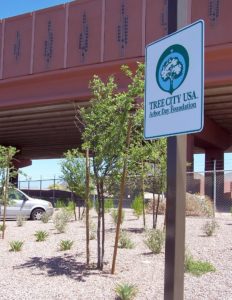
This year is a milestone as 2022 marks 150 years since J. Sterling Morton founded Arbor Day. His simple idea of setting aside a special day for tree planting is now more important than ever. The first official Arbor Day was created by Morton and celebrated in Nebraska in 1872. It’s noteworthy that Morton realized the many environmental benefits of trees. He especially saw the need for planting trees as wind breaks due to the windy Nebraska plains, but also observed how they prevented soil loss, helped absorb moisture in the normally dry soil, and shaded people and animals from the hot sun. In the years following that first Arbor Day, Morton’s idea spread beyond Nebraska and today all 50 states celebrate Arbor Day. The national Arbor Day is typically celebrated the last Friday in April, so this year Arbor Day 2022 is Friday April 29.
Tree Programs by Our Water – Use It Wisely Partners
Now you have a better idea how trees can truly contribute to a vibrant and sustainable community – especially in our desert environment. That’s why many of our Water – Use It Wisely partners provide programs and classes to help our residents with tree selection and maintenance ideas. One of our partners (SRP) even gives away trees for free to help reduce their customers’ energy bills! And, did you know that saving energy can save water, too?
City of Mesa
April 30, 1:30-3 p.m.: Trees are Cool – Tree Care Workshop for Homeowners The program will cover proper tree selection, placement, watering, pruning, and more. The hands-on portion of this fun workshop will be an opportunity to participate in an Arbor Day Celebration tree planting in the Monarch Haven and Reading Sanctuary Garden located at the Red Mountain Branch Library in the northeast corner of the parking lot.
Find Tree Resources on our Arbor Day page, like tree selection, planting guidelines, how to hire a tree expert, pruning and watering, and more.
Salt River Project
SRP’s Shade Tree Program provides customers up to two free desert-adapted trees (approximately 4- to 6-foot saplings) to plant in energy-saving locations around your home. Shading your home helps reduce cooling costs, improve air quality and lower the Valley’s heat effect without using a lot of water. Upcoming workshops are scheduled for July 27, August 20, and September 10.
City of Glendale
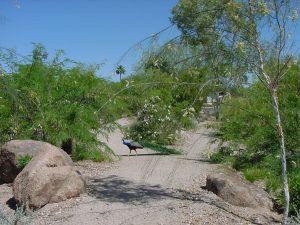
Tree Trail at the Xeriscape Demonstration Garden This 10,000-square-foot tree trail provides examples of desert-adapted trees with signage illustrating proper tree care practices. The trail demonstrates the latest in irrigation technologies and displays how trees can be watered using rainwater harvesting strategies such as basin-style planting and a variety of permeable pavers. Learn more by clicking on the link above, scroll to the tabs at the bottom, and click on “Tree Trail.”
Find Tree Videos on these topics from City of Glendale – each one is just 3-6 minutes long:
City of Scottsdale
Grow Strong & Healthy Trees is a great 22-minute video that details excellent planting and staking methods, as well as how to set up your drip irrigation to your tree.
Don’t forget to check our events page for upcoming water-saving workshops and programs by all of our Water – Use It Wisely partners.
Find these additional tree-mendous blogs on this topic:
Donna DiFrancesco is a Conservation Coordinator with the City of Mesa, AZ, one of 18 Water– Use It Wisely partners to offer water-saving advice and programs.


